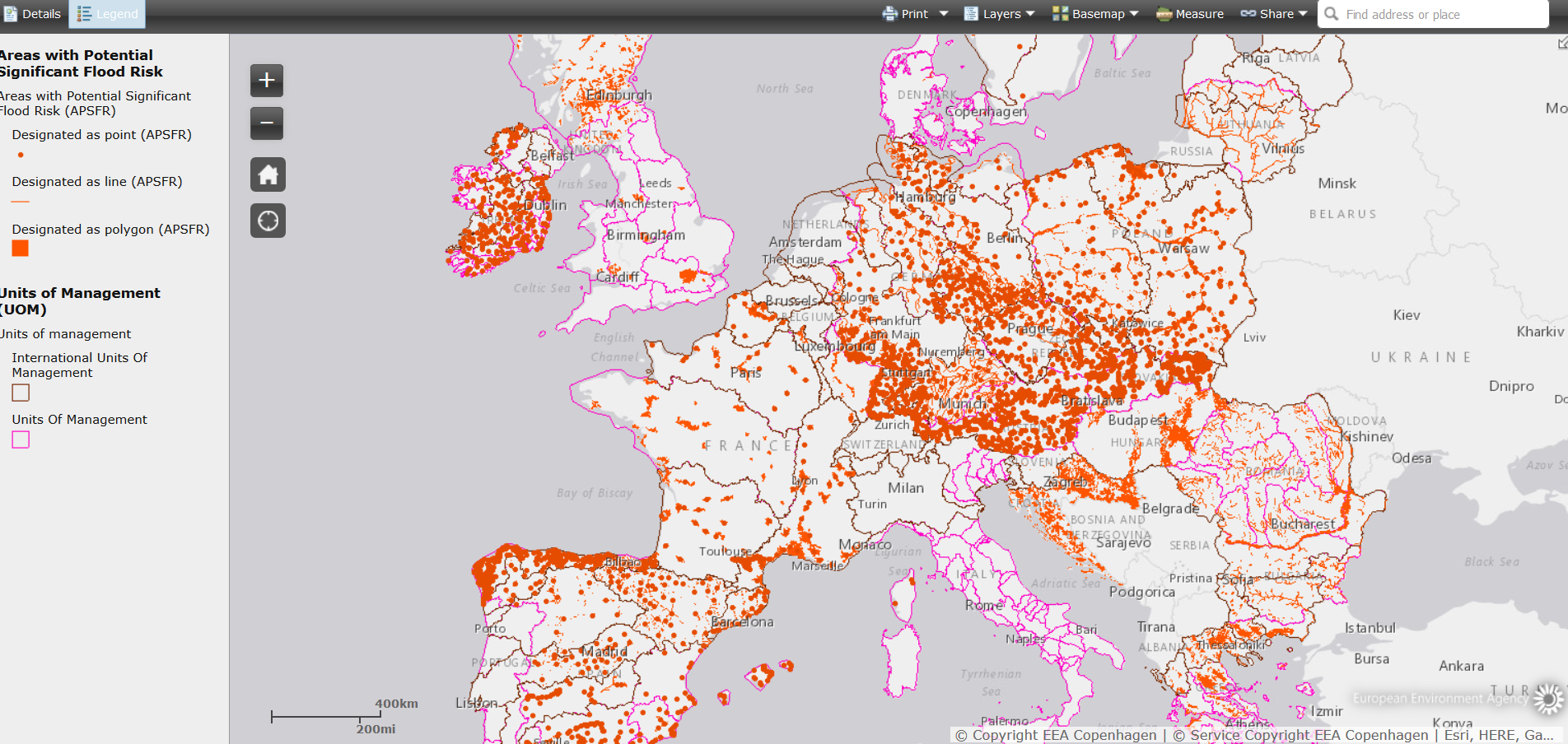European policies on water
Protecting Europe's shared water and marine environments, resources and ecosystems from pollution, over abstraction and structural changes will need coordinated action at EU level.
The WFD provides a framework for water protection and management in the EU. In 2010, EU Member States released 160 river basin management plans for the period 2009-2015, which aimed to protect and improve the water environment. The second set of river basin management plans covering the period 2016–2021 were finalized in 2016/2017.
In 2012, the European Commission published A Blueprint to Safeguard Europe's Water Resources (COM(2012)673). It focuses on policy actions that will improve how current water legislation is applied in practice and on integrating water policy objectives with other policies. The Blueprint builds on water policies relating to water resource efficiency and sustainable water management in the same timeframe as the EU's 2020 Strategy up to 2050.
In addition to the WFD and the Blueprint, there are four water directives to ensure the good status of Europe's waters:
The Floods Directive (2007/60/EC), which encourages the development of flood risk management plans, also significantly supports the objectives of the WFD. The EEA's Eionet structure also provides a solid foundation for establishing a harmonised policy and implementation framework among non-EU EEA member countries and the neighbourhood countries.
Management plans
River basin management plans
The best way to use water resources as sustainably is effective and holistic management of waters resources. Increased demand and increased usage of water resources, deterioration of natural conditions as quantitatively and qualitatively because of these increased usages and demands, and changing climate affect the water resources negatively and remain to be pressure on them.
Inland waters including groundwaters and seas are the home for many thousands of wildlife species, vital for many sectors such as agriculture, industry, navigation, energy etc. and source of drinking water. Such multiple demands on water resources put forward the need for sustainable, integrated and holistic management of water resources, which many different groups are needed to be actively involved in managing them. In the European Union's Water Framework Directive, it is stated that all river basins in Europe should be managed using a River Basin Management Plan. The Member States shall ensure that a river basin management plan is produced for each river basin district lying entirely within their territory and the river basin management plan shall include the information detailed in Annex VII.
Flood risk management plans
The objective of the Floods Directive (2007/60/EC) is to establish a framework for the assessment and management of flood risks to reduce the negative consequences of flooding on human health, economic activities, the environment and cultural heritage in the European Union.
Member States shall for each of their units of management (UOM) identify those areas for which they conclude that a potential significant flood risk exists or might be considered likely to occur (Article 5 of the Floods Directive). The Areas of Potentially Significant Flood Risk (APSFR) can be designated as areas (polygons), lines or points. Prior to the identification of APSFRs, Member States have undertaken a Preliminary Flood Risk Assessment (PFRA) based on available or readily derivable information (Article 4 of the Floods Directive) of the floods which have occurred in the past and of the potential adverse consequences of future floods.
Floods directive viewer, areas with potential significant flood risk


This briefing summarizes the main findings of a new assessment, Pricing and non-pricing measures for managing water demand in Europe, coordinated by the EEA, that provides insights into current water management practices with a focus on the household sector in Europe. The analysis is based on case studies of eight Member States: Cyprus (CY), Denmark (DK), France (FR), Germany (DE), Italy (IT), Romania (RO), Spain (ES) and Sweden (SE).
The assessment addresses water demand management practices including price and non-price approaches and considers their relative effectiveness in terms of managing water demand. Barriers and enabling factors for implementing these approaches are also considered.
Main messages:
- There is a solid legislative basis in the EU for long-term, integrated water management including frameworks for applying water pricing (e.g. tariffs) and non-pricing (e.g. water saving devices, education and awareness campaigns) measures for more efficient water use.
- Water pricing policies implemented in combination with other non-pricing measures prove to be most effective in reducing household water consumption. Water demand management strategies need to find the right mix of pricing and non-pricing instruments.
- In some of the case studies, price does not appear to be a significant determinant of water demand. However, the overall results indicate that EU households facing a water price increase will react by reducing water consumption. Independently from water consumption targets - water pricing still remains a key instrument in achieving cost recovery for water services to ensure the maintenance and financing of existing and future water infrastructure.

Document Actions
Share with others